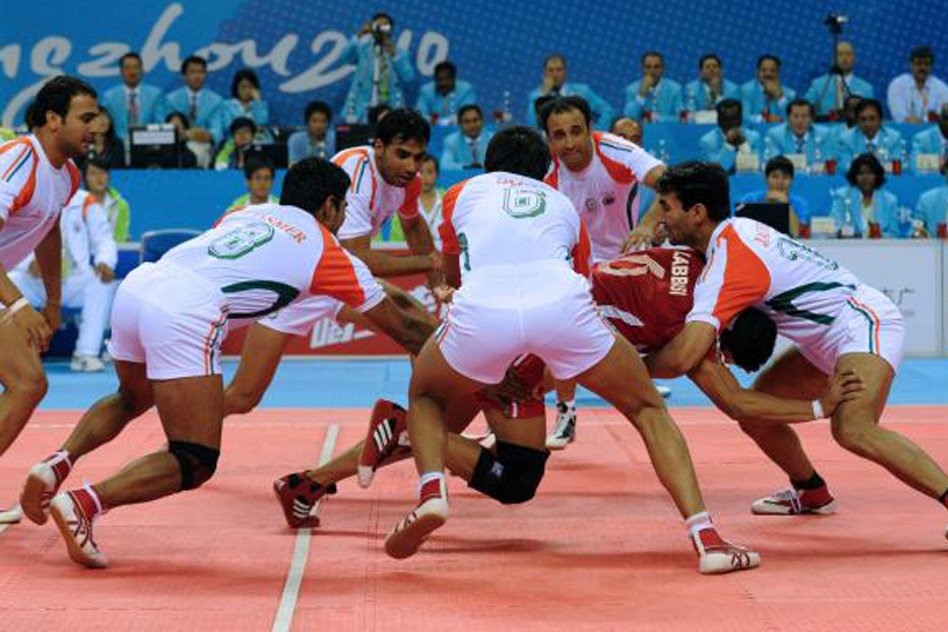
The Rising Popularity Of Kabaddi: Kabbadi Slowly Coming At Par With Other Sports In India
4 Sep 2015 5:04 PM GMT
Image Courtesy : talksport
The win of ‘U Mumba’ over ‘Bengaluru Bulls’ on August 23rd in the final of the 2015 Pro Kabaddi League brought an end to the second exciting season of the league.
The online viewership numbers for the kabaddi league have grown an astonishing 18.5 times — from 7 lakh unique visitors in the entire first season to over 13 million unique visitors in only the first two weeks of season two.
There’s a lot of kabaddi played in India throughout the year and is very well attended, but very little is telecasted unlike other sports like cricket and football. The Pro Kabaddi League has done a remarkable job in bridging this gap.
What’s more, on Star’s online platforms, 90% of consumption is coming from the top six metros, debunking the argument that kabaddi is essentially a rural sport, watched only by small town India. Interestingly, this is the only game that 28 per cent of the women in the country too watch, the statistic being the highest for any sport, says Srini Sreeramaneni, who co-owns the regional franchise ‘Telugu Titans’.
Kabaddi is a contact sport that originated in ancient India, and is very much popular across the South Asia. It is the national game of Bangladesh and the state game of many Indian states. Very few in India will claim ignorance of the basic rules of kabaddi, although the game has several variants.
In the international team version of kabaddi, two teams of seven members each occupy opposite halves with three players in reserve. The teams take turns sending a ‘raider’ into the other half. To win a point, the raider must take a breath, run into the opposing half, tag (touch) one or more members of the opposite team, then return to his home half before inhaling again. The raider should chant ‘kabaddi, kabaddi’ with his exhaling breath to show the referee he has not inhaled.
The raider will be declared out and will not gain the point if he inhales before returning to his side. The tagged defender(s) will be out if they do not succeed in catching the raider who tagged them and the raiding team gets one point for every defender tagged. Wrestling the raider to the ground can prevent him from escaping and get a point to the defending team.
India has been the most successful team on the world stage, having won every World Cup and Asian Games title so far, in both men’s and women’s categories.
Kabaddi World Cup was first played in 2004, then in 2007 and then annually from 2010 onwards. A circle format is followed from 2010 World Cup onwards, which has slightly different rules from what is followed in the rectangular field format. India is the unbeaten champion winning every edition held so far. Except for 2011, the other finalist has always been Pakistan since 2010.
The last world cup was held in 2014 in Punjab, India, where India emerged as the winner after defeating Pakistan 45-42 in a closely fought final with match swinging in India’s favour only in the last two minutes. The women’s team had it relatively easy, defeating Pakistan 47-19 in the semis and New Zealand 36 – 27 in the finals.
Men’s Kabaddi was introduced in the Asian Games in 1990 and Women’s Kabaddi was introduced in 2010. India has won all the gold medals in the Asian games (7 in men’s section and two in women’s).
The gold medal match in Men’s kabaddi between India and Iran in 2014 Asian games was particularly interesting. Iran initially got a lead of 10 points with a score of 17-7, and the score read 21-13 at half time. India made a spectacular comeback after the break to level the score at 21-21, and eventually won the match 27-25. Rakesh Narwal, the Indian team captain, played with a bleeding and bandaged head in the second half and led his team to an exciting victory.
Riding on the back of the rising popularity of the game and the Pro Kabaddi League, the organisers have decided to have two seasons a year from the next year. This will allow the fans to have more of their favourite game. The tournament will be held in January-February 2016 and then again in July-August 2016.
“It is a five-week activity now. We want to move it to 10 weeks. More the volume, more popular it will be. A lot of young people are already watching kabaddi on our digital platforms, which is a great indicator,” said Sanjay Gupta, chief operating officer at Star India.
Star also broadcasts the Hockey India League in January and this year both hockey and kabaddi leagues will be shown simultaneously on different channels of Star.
We hope that the popularity of the game spreads far beyond Asia and that the game is included in the Olympics in the near future.
 All section
All section













